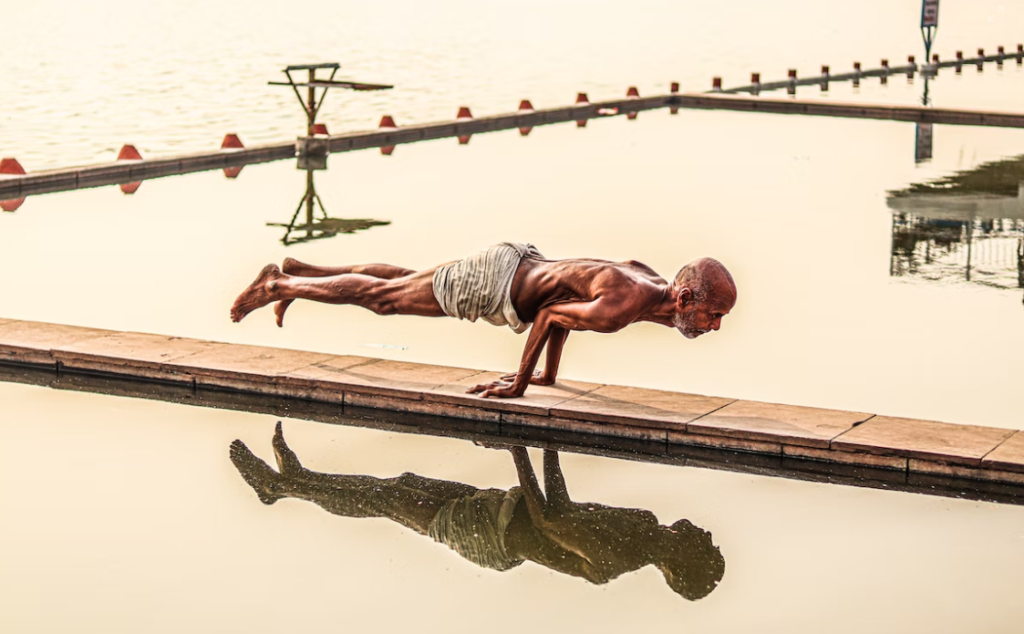What Are Visualization Exercises?
Learn about visualization exercises and how to apply them in our daily lives.

Selfpause Affirmation App
Download the app to get 1,000’s of affirmation meditations and everything you need to write, record and listen to your own.
If you have ever played a sport, you’ve probably seen athletes practice visualization exercises to improve their performance under pressure. Similarly, people who are prone to anxiety can use visualization to imagine what it feels like to feel anxiety-free and positive. These exercises can be extremely beneficial in helping you to overcome fears.
Guided Imagery

Guided imagery is a powerful way to relax and focus your mind. It relies on your concentration and imagination and is best practiced in a quiet place without distractions. A quiet bathroom may be a good option, and the idea is to imagine a peaceful environment as you take slow, deep breaths.
Guided imagery exercises can help you achieve a wide variety of goals and relax your mind. You can visualize an object, such as a beach or an ocean, and then focus on the positive aspects of each image. These visualization exercises can also promote concentration, relaxation, and memory. However, you should not use them while driving.
Guided imagery exercises are especially helpful for people with social anxiety. By picturing a comfortable, relaxing scene, the person can manage negative emotions and see the best possible outcome in different situations. Using imagery, people can imagine a good party, a pleasant experience at a beach, or a relaxing evening in a chair. Using guided imagery exercises is an excellent way to help control negative feelings and visualize a positive outcome before entering a particular situation. These visualization exercises can be especially useful for musicians who have performance anxiety, athletes who need to relax during a competition, actors who have to give presentations to groups of people, and students who need to present their work.
Guided imagery exercises are an important part of a meditation program. They can also help a person cope with a range of issues, such as learning tasks and health conditions. However, the most common purpose of guided imagery is relaxation. Most people perform guided imagery exercises to feel relaxed and relieved from everyday stress.
Using guided imagery exercises to calm your mind is a great way to reduce stress, anxiety, and insomnia. They can also help people deal with various medical conditions, including post-traumatic stress disorder, chronic pain, and eating disorders. In fact, many doctors recommend guided imagery exercises to patients. A patient who is undergoing a major operation can increase his or her chances of surviving the process if he or she visualizes a positive outcome.
Self-portraits

Self-portrait visualization exercises involve using different types of visual stimuli to create a realistic image of your own face. Self-portraits are a significant part of photo history. They date back almost to the invention of the camera. In art classes, students are encouraged to use this technique to create something meaningful or profound. It can even serve as an escape for students who have trouble coming up with a new idea. The self-portrait may be a useful tool for students to develop their creative thinking skills.
Self-portrait exercises also help you explore your persona. You can tell stories using your self-portrait to explore your past, present, and imagined future. These exercises can help you explore your feelings, fears, and goals. During the exercise, you may be able to recognize patterns in your life that you would not otherwise notice.
Another type of self-portrait exercise uses a mirror. A mirror can make a beautiful image. You don’t have to pose for the camera; you can simply stand in front of a mirror and reflect it back at yourself. A mirror is a powerful tool in bringing the spectator into the scene. This technique can be done in the privacy of your own home or in a public space. It can help you create the perfect image in a short period of time.
These exercises can help you identify the type of person you want to become and visualize your potential.
Happy Places

Everybody has a happy place – that place that makes them feel secure and calm. For some people, it’s a sunny day on the beach, a boat ride, or a room with loved ones. Whatever it is, it should calm and soothe your racing mind. Most people visualize the things they want in their life, but to really make that happen, you need to believe that it will happen.
One of the best exercises for stress relief is the visualization of a happy place. Simply think of a place you feel happy in and immerse yourself in that place. Practicing visualization exercises is a great way to alleviate stress and anxiety, and it can be done anywhere, at any time.
Taking the time to visit your happy place is an excellent way to create a happy place in your own home. Aside from visiting a vacation spot, you can also visit a local dance studio, martial arts gym, or sports club to challenge yourself and have fun. These activities will give you a feeling of accomplishment and help you feel better about yourself.
Future Vision

The key to effective future visualization exercises is to first understand what you want and why you want it. Once you’ve done this, you can organize your future visions into action plans that will help you reach your goals. Project OTY is a great tool for organizing your future visions into action plans. It will help you reach your goals by helping you to visualize what you want and how you can make it happen.
Another important benefit of visualization exercises is that they help reduce the distractions and anxiety that can distract you from achieving your goals. For instance, if you’re a marketer, a visualization exercise can motivate you to focus on your ideal state, which is crucial for success. It also helps you avoid being distracted by the noise around you, which can interfere with your focus.
Visualization exercises can be challenging, but they are incredibly powerful for your mental health. If you’re new to the process, try setting a timer while you visualize. Once you’ve gotten the hang of it, you’ll find that visualization is easier and more natural. Practicing visualization exercises can help relieve stress and improve your mood.
Visualization exercises can help you achieve your goals. They help you focus on what you want, instead of the things that don’t matter. Try to visualize a scene in detail, including all your senses. The more precise your visualization is, the more likely it is to be successful. For best results, do a full exercise at least once a month.
Our Top FAQ's
Visualization exercises are a type of mental training that involve creating a mental image or scenario in the mind. They are often used as a tool for personal development or improvement, and can be used to help achieve a variety of goals, such as increasing confidence, reducing stress, improving performance, and more.
Visualization exercises can be conducted in a variety of ways, depending on the specific goals and objectives of the individual or group. Some common approaches include guided visualization, where a facilitator leads the visualization process; self-directed visualization, where the individual creates their own visualization scenario; and group visualization, where a group of people collectively visualize a shared scenario.
There are many different techniques and approaches that can be used in visualization exercises. Some common ones include:
- Focusing on specific goals or outcomes: For example, visualizing oneself achieving a specific goal or success in a particular area, such as a sporting event or job interview.
- Using positive affirmations: Repeating positive affirmations or self-statements to oneself during visualization can help reinforce the desired outcome.
- Using all five senses: Engaging all five senses (sight, sound, taste, touch, and smell) in the visualization can help make the experience more immersive and real.
- Using visualization tools: Some people find it helpful to use visualization tools, such as visualization cards or visualization software, to assist with the visualization process.
Visualization exercises can be used for a wide range of goals and objectives, including personal development, stress management, performance enhancement, and more. Some specific areas where visualization exercises may be particularly useful include sports, business, education, and personal relationships.
There are several potential benefits to using visualization exercises as a tool for personal development or improvement, including:
- Increased confidence: Visualizing oneself achieving a specific goal or success can help increase confidence and belief in one’s own abilities.
- Improved performance: Visualizing oneself successfully performing a task or activity can help improve actual performance in that area.
- Reduced stress: Visualizing relaxing scenarios or positive outcomes can help reduce stress and anxiety.
There are also some potential drawbacks to be aware of when using visualization exercises, such as the risk of becoming overly focused on the visualization scenario to the exclusion of other important tasks or responsibilities, or becoming overly reliant on visualization as a substitute for taking action. It’s important to use visualization as a supplement to, rather than a replacement for, other strategies and approaches to personal development and improvement.
